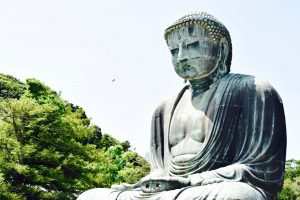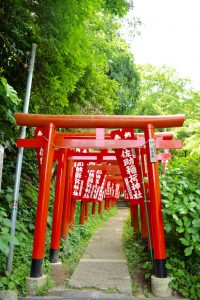I think the photos explain it all. Aesthetic Kamakura, the quintessential photographs of “rural” Japan. In China, there is a saying to describe the journey of a tourist: Sleep on the bus, see temples off the bus. That is exactly what Kamakura was for us. We saw temples and shrines throughout our hikes in the woods. Having two Japanese scholars with us, we got a very in-depth view of Japan’s history during the Kamakura period and later Meiji influences (see, I now know some of the names of Japanese periods). I came to Japan without knowing anything about Japanese history, especially not from the perspective of the Japanese documents/archives. Being able to learn the history in person is a very powerful event.
Because Kamakura was such a great setting for me, despite my sickly stomach issues, I want to take this post to talk a bit more personally about my experience. The history is fascinating since I had never heard of any of it before (except the Buddhism parts which I learned from a religion academic context rather than historical). I am a very quiet traveler. I don’t like people knowing where I come from and want to blend in as much as possible. My solution is to talk less and listen more, in addition, to hopefully observe the most from the ordinary. (As per senseis’ requests) I previously commented on how helpless I feel in Japan, not being able to communicate well, but being able to travel with a group that can understand, I do feel that I am getting much more than the “tourist experience.” For example, before entering a Shinto shrine, one should clean oneself by washing one’s hands and rinsing mouth. One tourist took the ladle and drank the water directly instead of dabbing the lips using the hand before spitting it out. As I saw the crowd of tourists at Kamakura yesterday, I wondered what they got from the experience in a country that they do not speak the language. I am interested in studying food culture, especially with the colonial dynamics of its history and the emerging attitudes based on increasing tourism. Does the average tourist come to Japan to visit the temples have even a brief idea of the history and politics behind the religious artifacts? Or, do they rejoice in updating their social media to show the “cool” and “cute” Japan with the “ancient, exotic” culture?



